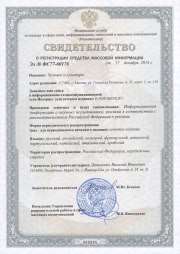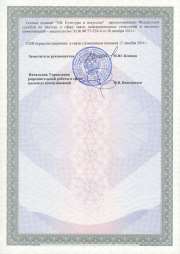|
MAIN PAGE
> Back to contents
Man and Culture
Reference:
Golovushkin D.A., Gumarova I.R.
Expanding or limiting the boundaries of the “allowable”: to the problem of outlining the concept of “religious art”
// Man and Culture.
2020. № 5.
P. 76-88.
DOI: 10.25136/2409-8744.2020.5.31638 URL: https://en.nbpublish.com/library_read_article.php?id=31638
Expanding or limiting the boundaries of the “allowable”: to the problem of outlining the concept of “religious art”
Golovushkin Dmitrii Aleksandrovich
Associate Professor, Department of History of Religions and Theology, A.I. Herzen Russian State Pedagogical University
191186, Russia, Sankt-Peterburg, g. Saint Petersburg, Naberezhnaya reki Moiki, 48, korpus 20 (Institut istorii i sotsial'nykh nauk), kab. 214

|
golovushkinda@mail.ru
|
|
 |
Other publications by this author
|
|
|
Gumarova Irina Ravkatovna
Artist, Curator of Educational Project "Art is Here"
191024, Russia, g. Saint Petersburg, ul. Degtyarnaya, 5-7, of. -

|
iris-ruthenica@yandex.ru
|
|
 |
|
DOI: 10.25136/2409-8744.2020.5.31638
Received:
07-12-2019
Published:
26-10-2020
Abstract:
Religious art is one of the most complex and controversial phenomena in the history of art. The attempts to conceptualize this phenomenon are relatively recent, and are carried out mostly in the context of the existence of confessional, ecclesiastical/nonecclesiastical, cult/atheistic art. Therefore, religious art within the Russian humanities traditionally receives ambivalent interpretation. In a narrow sense, religious art implies a combination of artworks with dogmatic, doctrinal, and liturgical meaning. In a broad sense, religious art represents a set artworks that reveal religious themes from ideological and figurative perspectives, reflect religious worldview, faith and experience, but do not carry sacred statues, nor intended for reverence, worship, liturgical practices. The author concludes that neither definition describes the distinctness and novelty of the religious art. The appropriate interpretation describes religious art as d both, ecclesiastical/non-ecclesiastical and cult / atheistic art. This leads to a terminological confusion, and doubts the need for introducing the concept of “religious art” and the phenomenon itself. The key towards understanding this phenomenon and a new definition of the concept of “religious art” can be their context – the European and Russian secularization. It is not coincidental that the first was addressed, and the second was deliberately formulated at the turn of the XIX – XX centuries. Religious art mainstreams during the historical periods when the boundaries of secularization/religion become flexible, initiating struggle for them.
Keywords:
Religious art, confessional art, church art, out-of-church art, cult art, non-cult art, secularization, desecularization, evolution of religion, contextual analysis
This article written in Russian. You can find original text of the article here
.
К постановке проблемы
История России рубежа XX – XXI вв. характеризуется т.н. «возвращением» религии и усилением роли религиозного фактора практически во всех сферах жизни российского общества. Исследователи называют этот процесс «десекуляризацией» или «постсекуляризацией», отмечая, что он сопровождается появлением новых форм искусства и религиозного искусства в частности. Сегодня диапазон работы с религиозной проблематикой варьируется от произведений, базирующихся на традициях академических школ до искусства, предлагающего новейшие художественные практики. Однако это многообразие и «пограничность», помимо новых возможностей, открыли также дорогу новым проблемам. Сторонники диалога церкви и светской культуры считают, что современное религиозное искусство может раскрыть содержание религиозной традиции. Противники, напротив, убеждены, что современное религиозное искусство не способно к разговору на религиозные темы и зачастую сводится к «святотатству» и «кощунству». Другими словами, тема современного религиозного искусства, с одной стороны, обнажила важные изменения в религиозной и социокультурной жизни российского общества конца XX – начала XXI веков. А с другой стороны, современное религиозное искусство актуализировало вопрос и о границах «допустимого» / «дозволенного» в искусстве на религиозную тематику. Поэтому, касаясь столь сложной проблемы, особенно вопроса т.н. «фильтров» и ответственных за них, важно знать опыт изучения и концепуализации данного феномена, в т.ч. существующие подходы к определению понятия «религиозное искусство». В противном случае можно столкнуться с другими, не менее серьезными, проблемами и их последствиями: эффектом «заколоченного гвоздя» (мифологизацией явления при отсутствии достаточной осведомленности о нем) и перспективой выплеснуть «из ванны с грязной водой и самого ребенка» («Das Kind mit dem Bade ausschütten»).
Пути и трудности определения понятия «религиозное искусство»
На первый взгляд понятие «религиозное искусство» не вызывает вопросов и нареканий. Однако работа с его объемом и содержанием, свидетельствуют, что зачастую оно является всего лишь «рамочным понятием» и может наполняться в зависимости от «предпочтений». К религиозному искусству может быть отнесена печатная копия сакрального изображения, по существу не являющаяся искусством, а также произведение, в котором религиозное присутствует лишь в качестве средства для решения преимущественно стилевых задач («Благовещение» У. Морриса). Религиозным искусством могут считаться вообще все «произведения на религиозные сюжеты», начиная от работ жанрового, исторического характера («Сельский ход на Пасхе» В. Перова, «Победа Пересвета» П. Рыженко), до «хип-хоп версий» традиционных изображений Девы Марии («The Holy Virgin Mary» К. Офили).
В то же время, некоторые произведения искусства, сущностно проникнутые религиозным содержанием и мирочувствованием, могут совершенно не признаваться той или иной конфессией или церковью в качестве религиозного искусства. В частности советский / российский историк религиозно-философской мысли Н.К. Гаврюшин указывал, что «статус так называемой религиозной живописи остается по-прежнему совершенно непонятным. Она существует как исторический факт, как апокриф наряду с каноническим житием (иконами – Д.Г., И.Г.), но богословски ее как особого жанра несомненно быть не может, ибо если изображаемое ею суть действительно образы своих первообразов, то им и подобает та же честь, которая воздается иконе. Если же они не являются образами первообразов, а отражают лишь фантазии живописцев, то в таком качестве они становятся иноприродными христианской культуре и даже враждебными ей, ибо при относительно внешнем сходстве с иконами несут совершенно другое содержание – объективированную прелестность духовного опыта…» [15, с. 32].
Спрашивается, почему и по каким причинам возникают такие разногласия, антагонизмы и неопределенность?
Во-первых, существует многообразие религиозных традиций, моделей отношения к религиозному образу, художественных практик, а также методов их изучения. Поэтому говоря о религиозном искусстве очень сложно претендовать на универсальность категорий, классификаций и схем. Каждая конкретная религиозная традиция требует отдельного исследования, совокупность которых в перспективе способна подвести к сравнениям и обобщениям. Придерживаясь этого подхода, в данной статье религиозное искусство рассматривается и концептуализируется в соположении с искусством христианской проблематики восточной традиции.
Во-вторых, по-прежнему не решен вопрос хронологической отнесенности религиозного искусства, альтернативного церковному / культовому искусству. Исследования, посвященные социокультурной динамике и эволюции религии в христианском мире свидетельствуют о том, что причиной тому могла послужить секуляризация, которая провела водораздел между светским и религиозным. Она инициировала процессы «изобретения религии», а значит и появление религиозного искусства, которое стало одновременно проекцией и маркером происходящих в обществе и культуре трансформаций. Безусловно, это процесс имел свои национальные, конфессиональные и региональные особенности, что нельзя не учитывать при изучении процессов становления и концептуализации религиозного искусства (в т.ч. постсоветской России). Но, так или иначе, эта связь религиозного со светским / религии с секуляризацией создает напряжение, недопонимание и конечно негативные ассоциации.
В-третьих, не менее сложным является вопрос о времени возникновения самого понятия «религиозное искусство». В отечественной гуманитарной науке он практически не разработан, однако некоторые исследователи относят его появление и начало активного использования в России к рубежу XIX – XX веков. Так, по мнению А.К. Флорковской, «на рубеже XIX – XX веков понятие ”религиозное искусство” как антитеза “церковному искусству” было осознано и сформулировано» [16, с. 429]. И это было сделано не случайно. Религиозная тема в искусстве России рубежа XIX – XX столетий заявила о себе именно в тот момент, когда раскол между церковью и светским обществом достиг своего апогея, а секуляризация вышла на новые рубежи – произошло освобождение религиозного от трансцендентного. В этих условиях / в этой ситуации русская интеллигенция, в т.ч. деятели культуры и искусства, стали искать средства, для преодоления пропасти между церковью и светским миром, инструменты для восстановления «связей», чтобы запустить процесс обновления и воспроизводства распадающейся культуры. Так может быть в этом стремлении к диалогу и взаимообогащению светского и церковного (т.н. коррелятивности), в желании выработать новый универсальный «язык» общения между ними и лежит ключ к пониманию феномена религиозного искусства и русского религиозного искусства в частности?
Дискуссия об объеме и содержании понятия «религиозное искусство»
Растяжимость объема и содержания понятия «религиозное искусство» неизбежно определяет междисциплинарный характер исследования данного феномена.
В контексте искусствознания религиозное искусство традиционно рассматривается как разновидность жанров искусства, а в более узкой его трактовке как «собственно религиозное (храмовое) искусство» [17, с. 18]. Светское же искусство с религиозными компонентами обозначаются как «религиозная тема» в искусстве.
Более глубокие теоретико-методологические разработки по проблеме религиозного искусства представлены по преимуществу в позднесоветской и современной религиоведческой литературе.
Одно из первых исследований советского периода принадлежит Д.М. Угриновичу. В книге «Искусство и религия», изданной в 1982 году, автор посвящает проблеме религиозного искусства отдельную главу, в которой формулирует и его определение, делая акцент на «функции» религиозного искусства в культовой практике: «Таким образом, мы приходим к определению религиозного искусства, в основе которого лежит функциональный признак. Религиозным искусством в этом смысле мы можем назвать те произведения искусства, которые включены в систему религиозного культа и выполняют в ней определенные функции» [13, с. 100].
Одновременно ученый был вынужден признать, что помимо «средств» культовой деятельности существует множество не храмовых, не ритуальных произведений искусства, но обладающих непосредственной связью с религией. На этом основании он формулирует более широкую трактовку понятия «религиозное искусство»: «Хотя искусство может быть функционально не связанным с религиозным культом и не иметь к нему прямого отношения, оно способно сохранять религиозное содержание, т.е. художественными средствами утверждать религиозные идеи и представления. … Следовательно, ныне существует не только религиозное искусство, включенное в систему культа (назовем его религиозным искусством в узком смысле слова), но и религиозное искусство, не связанное непосредственно с культом, но имеющее религиозную идейную направленность» [13, с. 101, 102].
Тема религиозного искусства нашла также отражение в многочисленных учебниках и учебных пособиях по религиоведению под редакцией профессора И.Н. Яблокова. В учебнике «Основы религиоведения», в соответствующем разделе за авторством В.С. Глаголева, приводится следующее определение понятия «религиозное искусство»: «Различают религиозное искусство в широком смысле слова – как имеющее религиозную направленность, но не связанное непосредственно с культом, и в узком смысле – как включенное в систему культа» [6, с. 444].
Сам И.Н. Яблоков определяет религиозное искусство как «совокупность художественных форм и средств, образно воплощающих религиозные мифы, символы, идеи, действия (обряды) и чувства, передающих (транслирующих) их как среди данного поколения, так и от поколения к поколению…» [9, с. 188].
Энциклопедический словарь «Религиоведение», содержащий важнейшие религиоведческие понятия, содержит статью российского религиоведа И.П. Давыдова, в которой предложена следующая дефиниция: «Религиозное искусство – одна из форм искусства как рода практически-духовного осмысления мира и человек в нем. … Может пониматься также как комплекс жанров, художественных форм и средств, адаптированных к выполнению специфической функции отражения и воплощения религиозных идей, драматизации мифов в ритуалах и обрядах, культовой архитектуре и т.п. Художественные средства литературы, музыки и изобразительных искусств, таких как живопись, скульптура, пластика, театр, кино, позволяют фиксировать, кодифицировать, консервировать, аккумулировать, транслировать и трансформировать (изменять и обновлять) различные образы религиозного опыта людей» [3, с. 867].
Одновременно в широком и узком смысле слова религиозное искусство трактуют религиоведы А.М. Прилуцкий В.Ю. Лебедев. По их мнению, «данный термин, прежде всего, обозначает совокупность произведений искусства, используемых непосредственно в деятельности религиозных институтов – богослужебной, вероучительной, миссионерской и т.д. Сюда относятся памятники храмового зодчества, фрески и иконы, искусно декорированная церковная утварь, иллюстрированные и вообще представляющие художественную ценность богослужебные книги, облачение духовенства, музыкальные произведения, исполняемые во время богослужений и других религиозных ритуалов и т.д. Кроме того, под религиозным искусством иногда понимается любое произведение искусства, если его содержание (тема, сюжет) связано с действием сверхъестественных сил или событиями религиозной истории» [4, с. 30].
В словарях и справочниках по религиоведению широко представлены также понятия, фиксирующие принадлежность искусства к определенной конфессии: «христианское искусство», «православное искусство», «буддийское искусство», «исламское искусство» и др. Как и в случае с понятием «религиозное искусство», они имеют узкую и широкую трактовку. Например, В.С. Глаголев под христианским искусством понимает: «1) Все виды и жанры искусства, представленного в богослужебной практике церквей и конфессий этой религии; 2) Все виды, жанры и образно-тематические решения искусства, признаваемые как воплощающие христианское мировоззрение и мирочувствование» [2, с. 1158].
Обобщая вышесказанное можно зафиксировать следующие «родовые признаки» религиозного искусства. В узком смысле, под религиозным искусством понимается совокупность произведений искусства, имеющих догматическое, вероучительное и богослужебное значение. В широком смысле религиозное искусство – это совокупность произведений искусства, сюжетно, идейно, образно раскрывающих религиозную тематику, выражающих религиозное мирочувствование, веру, опыт, однако не имеющих сакрального статуса, не предназначенных для поклонения и почитания, не являющихся частью богослужебных практик и храмовых комплексов.
Как видно «водораздел» проходит по линии места и пространства функционирования религиозного искусства, а также его статуса и назначения.
В восточно-христианской традиции это находит выражение в разделении религиозного искусства на церковное и внецерковное искусство. Первое является частью церковного культа (культовое литургическое искусство) и, как правило, имеет сакральный статус (почитается изображаемое через изображенное). Второе не предназначено для почитания верующими и имеет иные цели и функции: сохранение, утверждение, воплощение, фиксация, кодификация, трансляция религиозных истин, религиозного опыта и т.д. В результате, понятие «религиозное искусство» в своей «узкой» интерпретации нередко осознается / воспринимается как синоним / калька понятия «культовое» или «церковное искусство». Это своего рода форма, «язык» проявления религии. Не случайно функции иконы («богословия в красках») максимально приближены к функциям религиозным. Но в таком случае возникает вопрос, насколько икона, осознаваемая изнутри традиции в качестве богословского языка, может считаться религиозным искусством? Являюсь сакральным образом, в котором максимально спроецирована «вся система элементов…, составляющих религию» [12, с. 161], она выходит за рамки понятия искусства в его новоевропейском модусе. И только в художественной системе С. Ушакова икона превращается в вид искусства.
Совсем иное отношение к культовому искусству утвердилось в западно-христианской традиции и особенно католицизме. В силу специфики католического учения о мире и грехопадении (согласно которому грех лишь отдалил мир от Бога), а также признания рационально постижимого естественного закона, как данного Богом, здесь нет феномена «священных изображений», но есть феномен «изображений священного»: «Культовые изображения в православии имеют статус священных предметов и служат средствами “обожения”; образы, используемые в католическом культе и в протестантских церквях, как правило, изображают священное, но не являют его и служат средствами эмоционально-психологического воздействия» [8, с. 206]. В результате это способствует расширению и сближению функций и языковых возможностей храмового и внехрамового религиозного искусства. Как следствие граница между «широким» и «узким» пониманием религиозного искусства в католицизме практически отсутствует.
Курс на соединение православного содержания с формами западного искусства был взят в России в XVIII веке, с началом эпохи Просвещения и секуляризации. Этот период в истории русского искусства связан с ломкой традиции иконописи на место которой заступает альтернативная светская художественная традиция (масляная «молебная» живопись). Как отмечает Л.А. Успенский, «В XVIII веке происходит уже окончательное закрепление самого понятия искусства за новым живописным направлением, и икона из него исключается. … Традиционное церковное искусство заменяется светской живописью на религиозные темы, которая становится одним из “жанров” наряду с другими и, в силу предпосылок новой культуры, приобретает автономное бытие» [14, с. 364].
Поэтому вплоть до начала XX века икона ставилась в один ряд с примитивным народным искусством, а всякая попытка использовать в литургической живописи средства иконописи, воспринималась как непрофессионализм и неумение. При этом проникновение западного католического живописного образа в православную культуру полностью не уничтожило православное отношение к культовому изображению как к сакральному (молитвенное почитание живописных образов). В итоге это привело к тому, что фактически до конца XIX века феномены церковного и внецерковного религиозного искусства на уровне художественного языка были плохо различаемы. Однако при этом произведения, созданные на религиозную тему, но не для церкви, нередко вызывали осуждение. Вероятно именно в этой ситуации конфликта между «языком», экзистенциальным смыслом и предназначением искусства на религиозную тему, при практически полной нивелировке самостоятельности самого церковного искусства, вызрели характерный для России раскол и «вражда» между церковным искусством и религиозным некультовым искусством.
Однако как ни парадоксально, именно это напряжение, возникшее на рубеже XIX – XX вв. в русской культуре / в религиозной культуре, повлияли и одновременно стали свидетельствами становления и утверждения собственно религиозного искусства. Расширение границ «мира», способствовало расширению границ религиозного опыта, иному пониманию религиозных образов и выработке нового художественного языка, что вызвало к жизни две разнонаправленные тенденции.
Первая тенденция. Развитие религиозного искусства как формы диалога светской и церковной культур. Это своего рода срединный путь культуры / религиозной культуры, основанный на идее гармонизации традиции и новации, динамически соединяющий прошлое и будущее, и тем самым позволяющий ретранслировать религиозную традицию. А.К. Флорковская справедливо подчеркивает: «Эскизы для Владимирского собора М. Врубеля, как и осуществленные для этого же собора росписи В. Васнецова и М. Нестерова, показывают, что в церковной живописи оказался возможным синтез языка современного искусства того времени – модерна – и традиций древнерусского, византийского и ренессансного искусства. … На этом пути художников в предреволюционные годы сопровождал успех. Взаимное движение церкви и современных живописцев навстречу друг другу в стремлении обновить церковную живопись – неоспоримый факт искусства начала ХХ века» [16, с. 431].
Вторая тенденция. Стремление к полному отмежеванию религиозного искусства от церковного искусства. Не случайно символизм как направление искусства в России стал своего рода выражением / проекцией нового религиозного сознания, развивающего новый проект религиозной аутентичности современности / идеациональности культуры. Синтез этики с эстетикой сформировал в русском образованном обществе убежденность, что искусство заменит церковь и станет религией будущего. На этом основании сформировалось «специфически русское явление» – теургическая эстетика. Известный российский историк эстетики В.В. Бычков определяет ее, как «духовно ориентированную имплицитную эстетику, направленную на активное преображение всей жизни человеческой по эстетическим и религиозно-этическим законам в процессе особого художественного творчества, уповающего на духовную поддержку свыше» [1, с. 9]. Сама же теургическая концепция искусства, по словам М.М. Новиковой оформилась, как «философская мечта» о том, что «искусство сможет рано или поздно стать реальной силой, преображающей мир» [5, с. 3].
Эти две тенденции в той или иной степени присутствуют / конкурируют в религиозном искусстве и в современной России. Об этом свидетельствуют такие выставки и проекты как: «Осторожно, религия!» (2003), «Deisis / Предстояние» (2004), «Запретное искусство-2006» (2007), «ВЕРЮ» (2007), «Двоесловие / Диалог» (2010), «Хлеб неба» (2010 – 2011), «Icons» (2013), «Искусство и религия в современном пространстве» (2013), «Дары» (2013 – 2014), «Вне канона» (2014 – 2016), «Истина встречи» (2016), «Искупление» (2018), «В поисках утраченной середины» (2018), «Икона после Иконы» (2018 – 2019) и др.
Таким образом при определении понятия «религиозное искусство», важно понимать, что его границы (объем и содержание) сужаются, расширяются или даже становиться неуловимыми в зависимости от того каковы, где и как проходят границы между религиозным и светским. Этот вопрос напрямую связан с вопросом понимания / определения религии на фоне секулярного, а также понимания самого секулярного в ситуации «изобретения» религии.
О важности этой проблемы свидетельствуют выводы петербургской исследовательницы И.А. Тульпе, показавшей, что религиозное содержание искусства может быть выражено вне темы, сюжета и символики: «Искусство можно рассматривать как религиозное, но уже в широком смысле слова тогда, когда оно становится формой для любого отдельно взятого элемента религии. Идея божественного воплощается не только в религиозном сюжете, заимствованном из священных текстов, богослужебных книг, житийной литературы. Верующий художник, осознанно или нет, славу, всемогущество, милость бога, моральный идеал и проч. может выразить и выражает не только внекультовой практики, но и вне так называемого религиозного сюжета. Если знать о присутствии бога в каждом из его творений, то натюрморт, пейзаж, портрет и др., внешне представляясь светскими жанрами, по сути будут “картиной на религиозный сюжет”» [12, с. 162].
Рассуждения ученого, безусловно, имеют под собой глубокие основания [11]. Идея религиозной природы искусства, происхождения культуры из культа, была близка Н.А. Бердяеву и П.А. Флоренскому. Философ культуры и богослов П. Тиллих, вообще считал, что «религия как предельный интерес есть субстанция, наделяющая смыслом культуру, а культура – это сумма форм, в которых выражается основополагающий интерес религии» [10, с. 266]. Однако в таком случае мы сталкиваемся с невозможностью объективного прочтения «идеи божественного» / «абсолютных ценностей» в конкретных единицах искусства. Нельзя не признать, что степень присутствия в произведении религиозного содержания, мировоззрения, мирочувствования, его «религиозная направленность» определяется субъективно и / или требует методологии «расшифровки» произведения. При «герменевтике» практически любого произведения не исключается привнесение зрителем-христианином «своей» религиозности, в том числе и вопреки авторской идее. Известно, что П. Тиллих считал «Гернику» П. Пикассо великим христианским произведением искусства. Поэтому, И.А. Тульпе приходит к радикальному заключению: «Понятие религиозного искусства в широком смысле предельно расширяется и утрачивает смысл. Религиозное оказывается сущностной характеристикой искусства: бог – основание и источник искусства; искусство – одна из форм проявления божественного. …Всякое искусство, искусство вообще, есть искусство религиозное. … Феномен религиозного искусства отсутствует, понятие о нем – результат “произвола” сознания художника и/или зрителя» [12, с. 162].
В результате, остается либо согласиться с автором статьи «Искусство и религия», опубликованной в одном из наиболее фундаментальных трудов по религиоведению / истории религий – «Энциклопедии религий» (14 томов) под редакцией Линдси Джонс. Д. Апостолос-Каппадонна заканчивает ее следующим выводом: «Искусство, как и религия не поддается категоризации и всеобщему определению. Однако, несмотря на отсутствие признанной методологии или академического словаря, область исследований, определяемая как “искусство и религия”, продолжает оставаться актуальной» [18, p. 502]. Либо отталкиваться от того, что по мере развития общества, колебаний маятника секуляризация – десекуляризация, изменений форм религии, религиозного самосознания и религиозного самочувствия, изменяются и взгляды на религию и искусство. В этом плане «ключом» к концептуализации и дефинированию понятия «религиозное искусство» становиться контекст времени и контекст места.
Заключение
Рубеж XIX – XX вв., 1960 – 1980-е гг., конец XX века, не случайно выделяются как самые важные и яркие вехи в истории религиозного искусства и русского религиозного искусства в частности. В странах западной Европы и России религиозное искусство заявляет о себе именно в тот момент, когда раскол / конфликт между религией и секуляризацией достигает своего апогея и на этом фоне возникает, актуализируется движение в обратном направлении. Цели этого движения разные: диалог, коррелятивность, преодоление бифуркации, поглощение одного другим. Тогда же возникают и различные религиозно-реформаторские движения – религиозный модернизм, религиозное обновление, религиозный фундаментализм, стремящиеся в той или иной форме преодолеть разрыв между светским и религиозным, пытающиеся заговорить о церкви и мире на новом языке. Как следствие данный контекст «религиозного искусства» дает основания для формулировки и обоснования контекстуального определения понятия «религиозное искусство». Религиозное искусство – это феномен культуры, возникший в результате развертывания процессов секуляризации, чей комплекс формируется на периферии светского и религиозного. Религиозное искусство использует «светские» формы и является «светским» по бытованию, но религиозным по направленности и интенциям. В нем не только присутствует, но и доминантно раскрывается какой-то из важнейших элементов религии: религиозная истина, религиозный опыт, религиозные настроении и др. Однако при этом в нем может присутствовать то, что выходит за рамки конфессиональных значений и смыслов, то, что для культового / церковного искусства является излишним и даже неприемлемым.
Особенности восприятия и оценки современного религиозного искусства в России во многом обусловлены спецификой православной / церковной культуры – традиционным православным учением о грехопадении и спасении. Основываясь на идеях святоотеческого неоплатонизма, оно учит о глубоком отпадении мира от Бога. Поэтому задачей церкви – «совершенного человечества Христа», реальности противоположной миру, является спасение не мира, а «хотя бы некоторых». В соответствии с этой установкой любое мирское дело может рассматриваться как греховное, если оно не способствует, или не создает условия для спасения отдельной личности.
Однако социальная концепция современной Русской православной церкви сегодня претерпела радикальные изменения. Согласно ей церковь имеет целью «не только спасение людей в этом мире, но также спасение и восстановление самого мира» [7]. Поэтому меняется и представление о смысле и ценности того или иного действия человека, формах культуры и искусства в нашем мире. В частности, в «Основах социальной концепции Русской Православной Церкви», подчеркивается, что «светская культура способна быть носительницей благовестия. … Для проповеди о Христе пригодны любые творческие стили, если намерение художника является искренне благочестивым и если он хранит верность Господу. …Никакая культура не может считаться единственно приемлемой для выражения христианского духовного послания. Словесный и образный язык благовестия, его методы и средства естественно изменяются с ходом истории, различаются в зависимости от национального и прочего контекста» [7].
References
1. Bychkov V.V. Russkaya teurgicheskaya estetika. – M.: Ladomir, 2007. –743 s.
2. Glagolev V.S. Khristianskoe iskusstvo // Religiovedenie. Entsiklopedicheskii slovar'. – M.: Akademicheskii proekt, 2006. – S. 1158 – 1159.
3. Davydov I.P. Religioznoe iskusstvo // Religiovedenie. Entsiklopedicheskii slovar'. – M.: Akademicheskii proekt, 2006. – S. 867 – 868.
4. Istoriya religii: uchebnik dlya akademicheskogo bakalavriata / V.Yu. Lebedev, A.M. Prilutskii, A.Yu. Grigorenko; pod red. V.Yu. Lebedeva, A.M. Prilutskogo. – M.: Izdatel'stvo Yurait, 2017. – 456 s.
5. Novikova M.M. Problema teurgicheskogo tvorchestva v kontseptsiyakh kul'tury myslitelei serebryanogo veka: Avtoref. dis. ... kand. kul'turologicheskikh nauk. – Nizhnevartovsk, 1998. – 23 s.
6. Osnovy religiovedeniya Ucheb. / Yu.F. Borunkov, I.N. Yablokov, K.I. Nikonov i dr.; Pod red. I.N. Yablokova. – M.: Vyssh. shk., 2001. – 480 s.
7. Osnovy sotsial'noi kontseptsii Russkoi pravoslavnoi tserkvi // Azbuka very. Pravoslavnaya biblioteka [Elektronnyi resurs]. – Rezhim dostupa: https://azbyka.ru/otechnik/dokumenty/osnovy-sotsialnoj-kontseptsii-russkoj-pravoslavnoj-tserkvi/ (Data obrashcheniya: 22.11.2019).
8. Raevskaya N.Yu. Svyashchennye izobrazheniya i izobrazheniya svyashchennogo v khristianskoi traditsii. – SPb.: SATIS'''', 2011. – 270 s.
9. Religiovedenie: Uchebnoe posobie i Uchebnyi slovar'-minimum po religiovedeniyu / I.N. Yablokov. – M.: Gardariki, 2000. – 536 s.
10. Tillikh P. Izbrannoe: Teologiya kul'tury. Per. s angl. – M.: Yurist, 1995. – 479 s.
11. Tul'pe I.A. Iskusstvo v kontekste religiovedeniya // Vestnik Leningradskogo gosudarstvennogo universiteta im. A.S. Pushkina. – 2012. – T. 2 . – № 3. – S. 192 – 199.
12. Tul'pe I.A. Mifologiya. Iskusstvo. Religiya. – SPb.: Nauka, 2012. – 320 s.
13. Ugrinovich D. M. Iskusstvo i religiya. – M.: Politizdat, 1982. – 287 s.
14. Uspenskii L.A. Bogoslovie ikony pravoslavnoi tserkvi. – M.: Moskovskii patriarkhat, 1989. – 474 s.
15. Filosofiya russkogo religioznogo iskusstva XVI – XX vv.: Antologiya / Sost., obshch. red. i predisl. N.K. Gavryushina. – M.: Progress, 1993. – 400 s.
16. Florkovskaya A. Religioznaya tema i poiski sovremennogo iskusstva // Iskusstvovedenie. – 2015. – № 3 – 4. – S. 428 – 451.
17. Shaman'kova A.I. Religioznaya tema v otechestvennoi zhivopisi vtoroi poloviny XX – nachala XXI vv.: Avtoref. dis. ... kand. iskusstvovedeniya. – SPb., 2013. – 25 s.
18. Apostolos-Cappadona Diane. Art and religion // Encyclopedia of religion / Lindsay Jones, ed. in chief. – 2d ed. – Detroit: Macmillan Ref. USA: Thomson Gale, cop., 2005. – Vol. 1: Aaron-Attention. – P. 493 – 506.
Link to this article
You can simply select and copy link from below text field.
|
|





